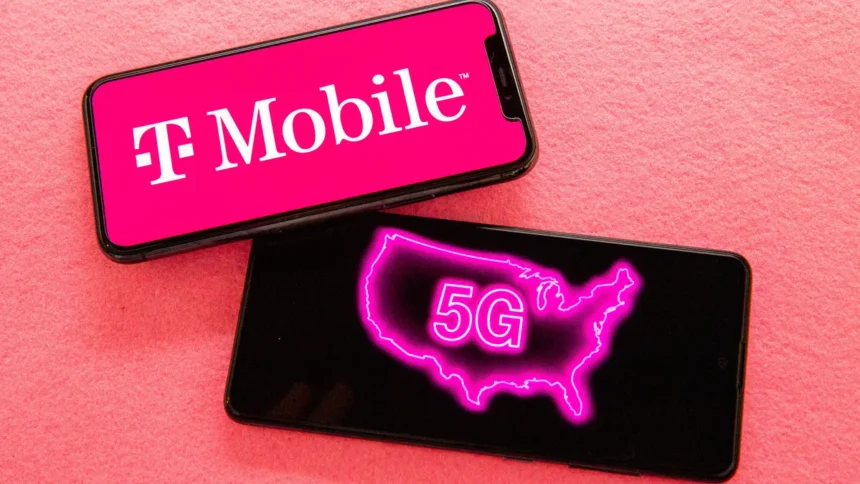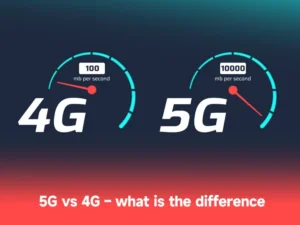Have you ever looked at your phone and wondered why it sometimes shows “T-Mobile Edge” instead of faster internet speeds like 4G or 5G? Don’t worry, you’re not alone! T-Mobile Edge is a technology that helps your phone stay connected to the internet, even in areas where the signal isn’t as strong. Let’s dive into what T-Mobile Edge is all about and how it affects your mobile experience.
What is T-Mobile Edge and How Does It Work
T-Mobile Edge is a type of technology that helps your phone connect to the internet, even when you’re in areas where the signal might not be very strong. It’s like a backup plan for your internet. When your phone can’t find a strong 4G or 5G signal, it switches to T-Mobile Edge so you can still check your messages or browse the web, though not as fast.
This technology uses older technology called GSM, which stands for Global System for Mobile Communications. It’s not as fast as the newer 4G or 5G networks, but it gets the job done when you need it. T-Mobile Edge works by using different frequencies to send and receive data between your phone and the nearest cell tower.
When you see “E” or “T-Mobile Edge” on your phone’s screen, it means your phone is using this older network to stay connected. It might not be as fast as 4G or 5G, but it helps you stay online until your phone finds a better signal.
The History of T-Mobile Edge Technology
T-Mobile Edge has been around for a while, even though newer technologies like 4G and 5G have become more popular. It was developed to make internet connections on phones faster than the older 2G networks. Back then, people used their phones mostly for calls and texts, but as smartphones became more popular, people wanted faster internet too.
The technology behind T-Mobile Edge is called Enhanced Data rates for GSM Evolution, or EDGE for short. It was a big improvement over older networks because it allowed people to use the internet while they were on a call. This was something that 2G networks couldn’t do very well.
Over time, T-Mobile Edge has become less common as 4G and 5G networks have taken over. These newer networks are much faster and can handle more data, like streaming videos or playing games online. However, T-Mobile Edge still plays a role in keeping people connected, especially in places where 4G or 5G signals aren’t very strong.
Why Does My Phone Switch to T-Mobile Edge
Sometimes, your phone might switch to T-Mobile Edge because it can’t find a strong 4G or 5G signal. This can happen if you’re in a rural area or inside a building where the signal can’t reach very well. T-Mobile Edge is like a safety net for your internet connection, ensuring you can still use basic apps and services.
Your phone is smart and automatically switches to T-Mobile Edge when it detects that the 4G or 5G signal isn’t strong enough. It’s designed to keep you connected even when conditions aren’t ideal.
Why Does My Phone Switch to the T-Mobile Edge Network
Your phone might switch to the Edge network when it can’t find a good 4G or 5G signal. This can happen in places where the signal is weak, like rural areas or inside buildings with thick walls. Edge is like a backup plan, making sure you can still use apps and websites, even if it’s slower than what you’re used to.
When your phone sees that the 4G or 5G signal isn’t strong enough, it switches to Edge automatically. It’s designed to keep you connected so you can still do things like send messages or look up information. If you notice your phone on Edge, it’s because it’s trying to give you the best connection possible in that moment.
Pros and Cons of Using the Edge Network
Using the Edge network has its upsides and downsides. On the positive side, it helps you stay connected in areas where 4G or 5G signals are weak. This means you can still use basic internet services like email or maps. It also tends to have better coverage in rural or remote areas where newer networks might not reach.
However, there are drawbacks too. The Edge network is much slower compared to 4G or 5G. This means activities like streaming videos or downloading large files can be frustratingly slow. It’s also less reliable in crowded places where many people are using their phones at the same time. Overall, while it’s good for basic internet needs, it may not be ideal for heavy internet users.
Tips to Improve Your T-Mobile Edge Connection
If you find yourself on the Edge network often and want to improve your connection, there are a few things you can try. First, make sure your phone’s software is up to date. Sometimes, updates can improve how your phone connects to networks.
Second, try moving to a different location. Sometimes, simply changing where you are can give your phone a stronger signal. Third, consider restarting your phone. This can sometimes clear up any temporary issues with your connection.
Lastly, if you’re in a building, try moving closer to a window or outside. Buildings with thick walls can weaken signals, so being near a window can help your phone connect better.
Is the Edge Network Still Relevant Today
In a world where faster networks like 4G and 5G dominate, you might wonder if the Edge network still matters. While it’s true that newer networks are faster and better for things like streaming videos or playing games, Edge still plays a role.
Edge is still used in areas where 4G or 5G signals aren’t strong enough. It provides a fallback option, ensuring people can stay connected to basic internet services when they need to. For some people in rural or less populated areas, Edge might be the most reliable option available.
Overall, while newer networks are the future, Edge continues to be important for maintaining connectivity in a variety of situations.
Understanding the Differences: Edge vs. 3G vs. 4G vs. 5G
The Edge network is just one of several generations of mobile data technology. Here’s how it compares to 3G, 4G, and 5G:
3G: 3G was an improvement over 2G, offering faster speeds for internet browsing and data transfer. It was the first network to support video calling and mobile internet on a larger scale. While faster than Edge, it’s slower than 4G and much slower than 5G.
4G: 4G brought even faster speeds than 3G, making it ideal for streaming videos, online gaming, and downloading large files. It’s widely used today for high-speed internet on mobile devices.
5G: 5G is the latest and fastest network available, offering blazing-fast speeds and low latency. It’s designed to handle more devices simultaneously and support futuristic technologies like self-driving cars and augmented reality.
Each generation represents a leap forward in speed and capability, with 5G being the most advanced and Edge being the most basic. Depending on where you are and what you’re doing, your phone will automatically connect to the fastest available network.
How Edge Impacts Battery Life
Using the Edge network can affect your phone’s battery life differently than newer networks. Because Edge is slower, your phone might need to work harder to complete tasks like loading web pages or sending emails. This increased workload can drain your battery faster compared to when you’re connected to 4G or 5G.
If you find yourself on Edge frequently and notice your battery draining quickly, there are a few things you can do to conserve power. You can adjust your phone’s settings to limit background app refreshes or reduce screen brightness. Using battery-saving modes can also help extend your phone’s battery life when using slower networks like Edge.
Conclusion:
In conclusion, T-Mobile Edge is like a superhero cape for your phone’s internet. It steps in when the faster 4G or 5G networks aren’t around, helping you stay connected in places like rural areas or inside big buildings. While it may not be as fast as the newer networks, it’s reliable for basic things like sending messages or checking maps.
Looking ahead, while 4G and 5G are taking the spotlight with their super speed and cool features, Edge still has its role to play. It ensures that everyone can stay connected, no matter where they are. So next time you see that little “E” on your phone, remember that T-Mobile Edge is there to keep you connected, even when the internet waves get a bit wavy!








